INSP Lab is the initiative of 3 theatres (Maken, Gronnegarde, and Cantabile 2) in the region of South Zealand, a rural part of Denmark just south of Copenhagen. The idea is to get a group of artists from different disciplines and different countries, put them in a theatre together for 4 days, and let them inspire each other. The programme is running for 3 years, led each year by a different facilitator and taking place in a different one of the three participating theatres. We were the second group to take part, working at Cantabile 2 and led by Annette Mees.
From the beginning of the Lab we were thrust into making – even the warm up games came with questions: What works about this game? How might we improve it? What happens if we add a new rule? And so began 4 days of talking, making, destroying, re-making, more talking, questioning, and trying out. I returned both refreshed and exhausted, and eager for more.
I had intended for this to be an ongoing blog for the duration of the Lab, but as often happens, I got sucked into the work, the space, and the camaraderie of the group and so instead, this is more of a reflection on my experience and the starting point for new questions to emerge. I can’t promise this will be a brilliantly structured piece of prose, it is likely to degenerate into more of a ramble and collection of thoughts and observations. Enjoy, and please feel free to add to the discussion…
Here are the things that inspired me:
The importance of making something for yourself, rather than thinking about the audience at the very beginning. What is important for you? What do you want to make? Happy accidents may occur and an audience point of view will become apparent later on. Not working towards an end product, but simply working, and being open to what might occur.
Magic is often found in simplicity. The surprise splash of a bucket of water onto a concrete floor, with natural light through the windows creating unexpected shapes and patterns in the reflections. Hands and feet are used to spread the water, which also forms a character of its own and runs in unexpected directions, its fingers reaching out towards the audience. Aiwa generously shares her illustration practice with us and transforms it into a piece of performance art that invites the audience to join in creating the picture. Knud and Steve added sound looping to form the beginning of an evolving scenographic soundscape, with the image leading the creation of sound, and the sound growing to make a lingering echo of the visual layers that had been built up. This moment is the start of a larger exploration of found sound and visual image working together.
Some of the work we made inspired awe in the audience – these were the moments we were surprised or felt in danger – we all know electricity and water don’t mix, so what happens when Christian dangles some plugged in stripped wires into a bucket of hydrochloric acid? Well, first of all we all take a few steps backwards. Then as colours formed in the water and the fizzing and crackling of the electricity crescendoed, we forget our fears and press our noses against the glass in excitement. We’re all looking for the possibilities of playing with fire and electricity now.
The sound of a kettle boiling. Listening. Those small moments that require focus, and how we can help both ourselves as artists, and an audience at a performance obtain that focus. Invited to lie down in front of a larger audience group, I am apprehensive. Johan sits near my head plucking elastic bands to form a rhythm. The kettle clicks on and begins to bubble, it is also close to my head. I am nervous. People are watching me and I feel vulnerable. As the kettle reaches its climax, Ken raises a giant sword above my head. Now I am a bit afraid. On the underside of the sword it says “The Silence of the Rain”. The sword is put down. The kettle stops. I am released. My group re-make the piece in a dark room with the audience under a table. This feels safer for me, not least because I am making rather than being made.
On the first day we created a space adventure – tasked with the challenge of creating a piece with an action, image, place, and a gift for the audience, we gave the audience paper towels to wear as space helmets and led them on a journey through the outdoor space of the theatre (an old factory) to save the earth. Our props were simple: a tiny bicycle with flat tyres, a globe, and a walking stick. The piece consisted of Laura and myself (two non-performers) making the audience duck and dive, watching out for meteors and space junk, follow lines of tarmac, and eventually, ride the tiny bicycle together in a circuit around the globe. Design-wise, I can’t say it was my finest piece of work, but our audience bought into it and made the piece live through their enthusiastic participation. Johan told me he’d taken his children on the same journey when they became tired of the performances happening indoors – they came without the baggage and self-awareness that adult audiences find it hard to escape, and were able to take the piece to another level, despite the fact that all the props had by this point been put away. Johan walked them through the journey, and the children became so totally invested in the spirit of it that they were able to ride the bicycle despite it not being there, and to hold onto their helmets without the piece of paper as a substitute prop. They believed the guard would hurt them if they didn’t hide underneath the window, they were genuinely on the look-out for stray comets and rogue space junk. If only we can find a way to re-awaken our child-view of the world, to truly believe and play, to re-gain the ability to 100% buy-in to a story, a game, or a drama.
Game theory and the possibility of a player subverting the game, either on purpose, or because they didn’t understand the rules. What is a successful game and how much do we permit it to be broken? The final piece that Pernille, Vera, Johan, and I created, was a game of choice and tarot cards that led to the audience choosing one of 3 small rooms, each containing a different experience . The first part of the experience involved the audience making two choices. These choices led to the creation of a number (1-3), which indicated the room to which entry would be permitted for that audience member. It was intended as a one-person experience, so that the choices and experience would be individual, and also because each room was approximately the size of a toilet cubicle. We hadn’t considered that some people might want to break our game, until an audience member came forward with her son – they wanted to try the experience together. At first I thought they simply hadn’t understood, and explained that it was for one person at a time. But she was insistent, and so we let them into a room together. I don’t know how they experienced their chosen room, I didn’t get a chance to ask, but their approach brought up the question of how strictly we set the perameters of an experience, and how broken a game can be before it is not even a game anymore. Do the audience know best? Or do we, as creators, know what will work for them? There has to be give and take here. It wasn’t a problem for them to experience the room together (although they may have been a bit squashed once inside), but once I’d told them it was only for one, and we had had to discuss this, the moment was already broken, the experience was damaged. I could have not said anything, but I felt my duty towards the game to explain the rules. Who wins and who loses? Can a phoenix spring from the ashes of a broken piece of work and create something new and better? Sometimes yes, sometimes not. In practical terms, how much space can we give an audience to make free choices within a piece of work? Games always have rules; and people always have expectations. The expectations and the rules might not always match.
Fear: we were encouraged to leave our comfort zones, to try something new, to not be afraid to fail. I realised 3 days in to the Lab that I hadn’t drawn anything. I’d been creating work using a wholly different practice to my normal approach. So when I did go back to the sketchbook, I used it only to roughly map and record ideas rather than to work things out. We worked things out together in the room.
Perspective: we can see spaces and places in a different way by manipulating how the audience perceive them. A thin sliver as a viewpoint tells us something, a photographer frames their photograph to accentuate the story they wish to tell. Parts are left out, parts are included. The position of the audience is imperative to their understanding and the power of the performance.
When a space has been changed or animated as part of a performance it becomes permanently altered in the mind of the people who had the experience – on returning to the space, the shadows of the event still linger. The bicycle will always be the space vehicle; the paper towels always helmets, and there will always be hungry artists if you look between the wooden planks of the outside stairs.
The audience as playmates: we were privileged to play the role of both makers and audience. Each group created a short piece of work which another group was invited to experience as an audience. Afterwards, we discussed what we liked and didn’t like, and the “audience” remade the work according to how they thought they could improve it. Some pieces were improved, whilst some lost their essential essence. We had the luxury of a “safe” audience on whom to experiment during the lab. We were all there to support each other and all had an understanding of the creative process. We were encouraged to be ruthless about breaking things – each others work as well as our own – but we always knew that failure was not absolute in this context. When it came to the time to open the space to a “real” audience on the final day, we were of course apprehensive. Many of us (myself included) fell back into the old ways of “show-mode”, trying to get everything perfect for the audience. Momentum slowed, the fear took over, and we lost the spirit of play and the trust in ourselves. The night before the final day, I was on the verge of giving up on the space we’d chosen and going to make sound in a different space entirely! We re-named the audience as “visitors”, our guests, welcome to share our experience and discuss it with us, rather than receive our work as a commodity to be judged. This allowed for space to draw energy from the audience as well as giving energy to them. We learnt to give space to the audience, to not explore all the options before inviting them in – the importance of giving ourselves permission to develop the work whilst the audience are there. Once we regained this, we lost some of our fear and were able to keep creating: we were getting ready but still playing, new discoveries were made moments before the first audience members entered, and continued to be made as each room was explored, as we learnt how people responded and how we could guide them towards a better experience. Happy accidents continued to occur: a spur of the moment decision to fill a room with biscuits led to an overpowering smell of sugar, an unexpected multi-sensory element to the installation. Walking out of a door with Pernille’s camera trained on it led to a dance performance between audience and installation. Surprises are the best form of inspiration but they can only occur if you prioritise playing over planning.
Where do we go from here? I hope to retain the inspiration and new-found knowledge from this week, but I fear it won’t be long before I am sucked into “show mode” again. The need to make a perfect thing, and the fear of failure are the enemies of inspiration.
Thanks so much to all of the brilliant, generous artists who shared their practice and were so inspiring this week: Christian Liljedahl, Hannes Oli Agustsson, Johan Segerberg, Ken Eklund, Knud Riisojgard, Steve Lawson, Aiwa Roga, Vera Rahbeck, Mia Lipschitz, Ingrid Riss Hovgaard, Laura Madsen, Pernille Plantener Holst, Hannah Karina Mikkelsen, and expert documenter Ingrid Lill.
And special thanks to Annette Mees and Annethia Teresa Lilballe for guiding, prodding, poking, gelling, and making sure there was always cake in the afternoons.
I hope we can all get together for a refresher course on a regular basis.
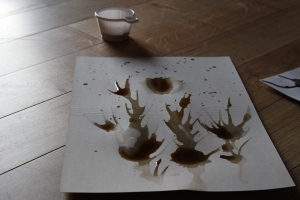




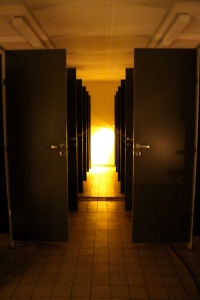
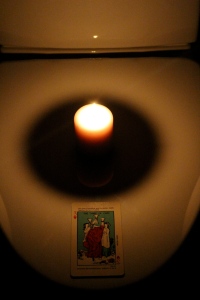
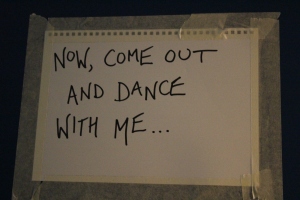
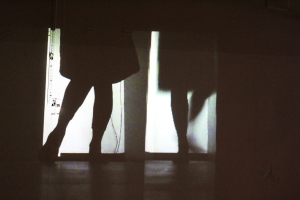
Good to have your reflections. For instance your reflection on the game. In this case it was very much a personal thing for this women, as I see it. We have in danish a saying: Det man siger er man self. I think that in english it is: it takes one to know one. She talked about, that we were not open, because we had these rules. The thing is, that she was not open to have the experience, which she could have had, if she had folloved the rules of this game. She dit not experience the magic, because she decided not to follow the rules. But a good question: when is it good to follow rules and when is it good to break the rules?
LikeLike